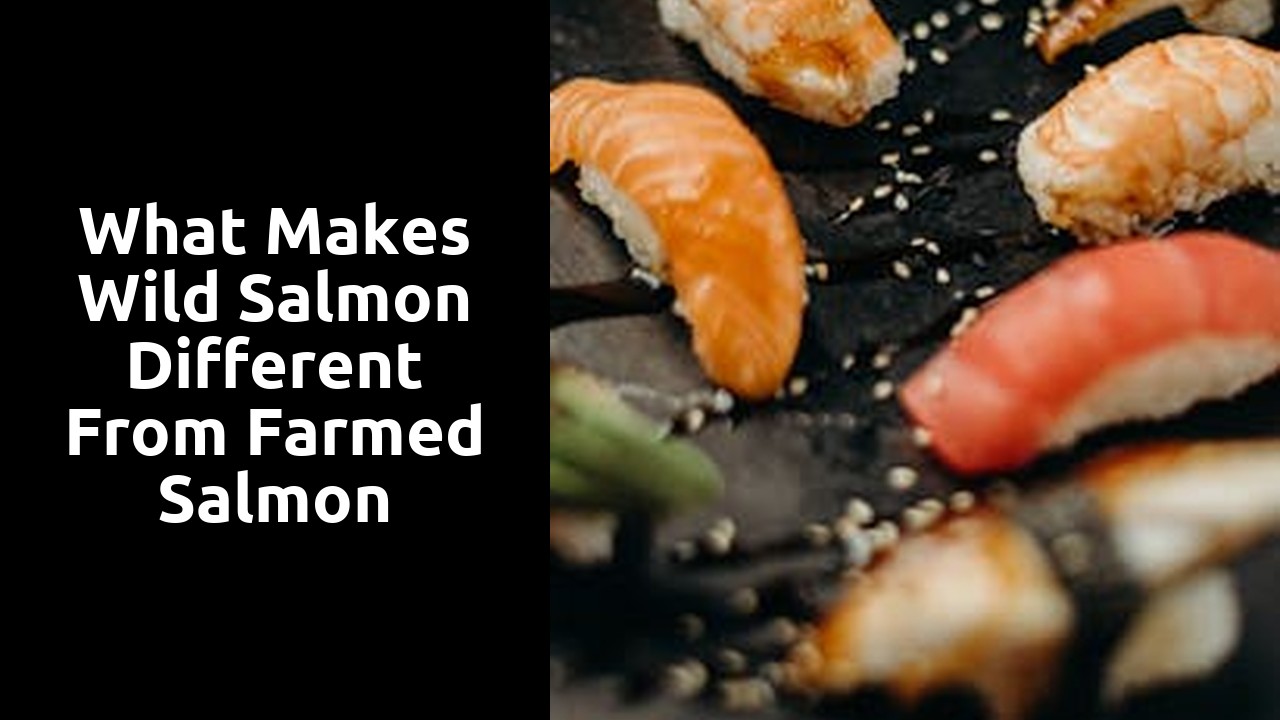What Makes Wild Salmon Different from Farmed Salmon

Regulatory Variations for Wild and Farmed Salmon
When it comes to the regulatory framework surrounding wild and farmed salmon, there are notable differences that impact their respective production and sale. Government bodies are tasked with monitoring and enforcing regulations in the salmon industry. In the United Kingdom, for example, wild salmon fishing is tightly regulated to ensure sustainability and prevent overfishing. In contrast, farmed salmon production is subject to different sets of regulations that primarily focus on farm operations and fish health.
Regulatory variations between wild and farmed salmon also extend to factors such as environmental impact and food safety standards. While wild salmon harvesting is governed by rules aimed at protecting marine ecosystems and natural habitats, farmed salmon regulations centre around farming practices, use of antibiotics, and disease prevention measures. These differences play a crucial role in shaping the characteristics of wild and farmed salmon available in the market.
Government Oversight
Government oversight plays a crucial role in ensuring the safety and quality of both wild and farmed salmon in the United Kingdom. The Food Standards Agency (FSA) and the Environment Agency are responsible for regulating the production, processing, and distribution of salmon to guarantee that it meets the highest standards for consumer consumption.
These agencies conduct regular inspections and testing to monitor the levels of contaminants, such as mercury and PCBs, in both wild and farmed salmon. By enforcing strict guidelines and standards, the government aims to protect public health and maintain the integrity of the salmon industry in the UK.
Sustainability Factors of Wild Salmon in Comparison to Farmed Salmon
Wild salmon and farmed salmon vary substantially in terms of sustainability. Wild salmon is known for its natural ecosystems where it thrives, unlike farmed salmon which is raised in crowded pens with potential risks of disease spreading. The natural habitat of wild salmon allows them to maintain their health and vitality without the need for artificial feeds or excessive antibiotics, contributing to a more sustainable environment overall.
Furthermore, the fishing practices for wild salmon are often regulated to maintain healthy fish populations, preventing overfishing and preserving the marine ecosystem. In contrast, farmed salmon production can lead to environmental pollution through excess fish waste and chemicals used in farming practices. By choosing wild salmon over farmed salmon, consumers can support sustainable fishing practices and help protect the delicate balance of marine ecosystems for future generations.
Marine Resource Preservation
Preserving marine resources is a critical aspect of maintaining the delicate balance of our oceans' ecosystems. Wild salmon play a vital role in this preservation, as they swim freely and interact with their natural habitats in ways that farmed salmon simply cannot replicate. By allowing wild salmon to thrive in their natural environments, we are helping to ensure the overall health and sustainability of marine ecosystems.
Farmed salmon, on the other hand, often require high levels of artificial intervention, such as antibiotics and pesticides, which can have harmful effects on marine life and ecosystems. The overcrowding of farmed salmon in pens can lead to pollution of the surrounding waters, impacting the delicate balance of marine resources. By choosing wild salmon over farmed salmon, consumers can make a conscious decision to support marine conservation efforts and help protect the natural habitats of these magnificent creatures.
Cooking Variances Between Wild and Farmed Salmon
When it comes to cooking wild and farmed salmon, there are distinct differences that can impact the final taste and texture of the dish. Wild salmon, due to its leaner muscle mass and lower fat content, tends to cook faster than its farmed counterpart. This means that when preparing wild salmon, it is crucial to keep a close eye on the cooking time to prevent it from becoming dry and overcooked.
On the other hand, farmed salmon, with its higher fat content, offers a more forgiving cooking process. The added fat helps to keep the fish moist and juicy, even if slightly overcooked. This makes farmed salmon a popular choice for those who are less experienced in the kitchen or prefer a more indulgent and buttery texture in their fish. Additionally, the higher fat content in farmed salmon lends itself well to methods like grilling and smoking, which can enhance the natural richness of the fish.
Preparation Techniques
When it comes to preparing wild and farmed salmon, there are notable distinctions in the techniques that can be employed to bring out the best flavours and textures. For wild salmon, its leaner flesh and more pronounced taste lend themselves well to simple cooking methods such as grilling, roasting, or pan-searing. These techniques help to enhance the natural flavours of the fish without overpowering it with heavy seasonings or sauces.
On the other hand, farmed salmon with its higher fat content can be more forgiving when it comes to cooking methods. This allows for a wider range of options such as baking, poaching, or even smoking, which can help to impart different nuances to the final dish. However, it is important to be mindful of the cooking time and temperature to prevent the fish from becoming dry or losing its delicate texture.
Related Links
What Are the Environmental Impacts of Wild Salmon FishingHow to Cook Wild and Farmed Salmon
The Ultimate Guide to Sustainable Seafood
Review: The Best Sustainable Salmon Brands
5 Sustainable Seafood Labeling Certifications to Know